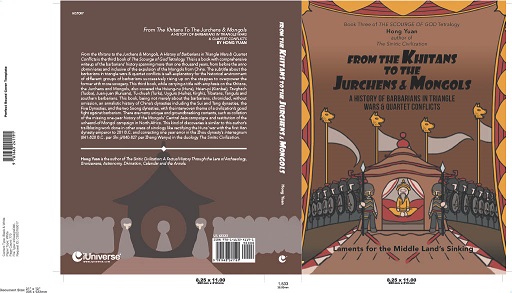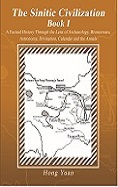
Sinitic Civilization-Book 1
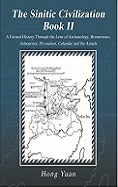
Sinitic Civilization-Book 2
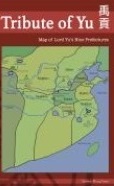
Tribute of Yu

Heavenly Questions
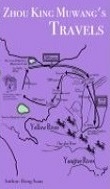
Zhou King Muwang's Travels
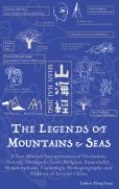
The Legends of Mountains & Seas
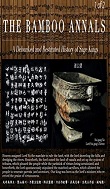
The Bamboo Annals - Book 1
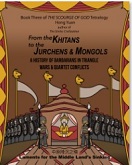
The Scourge-of-God-Tetralogy:
From the Khitans to the Jurchens & Mongols: A History of Barbarians in Triangle Wars and Quartet Conflicts
(available at iUniverse;
Google;
Amazon;
B&N)
|
|
THE VIETNAMESE & SOUTHERNERS
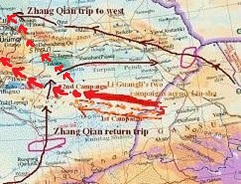 For details on when the east met with the west, see this webmaster's discussion on the Huns, the Yuezhi, the Tarim Mummies, the Yuezhi-Yushi misnomer,
the Mongoloid-Caucasoid admixture at 2000 B.C.E.,
the fallacy of the Aryan bearing of the Chinese civilization,
the fallacy of the Yuezhi jade trade,
the Yuezhi migration timeline,
as well as
the location of the Kunlun Mountain,
Queen Mother of the West,
the legendary book of mountains and seas at the Imperial China blog,
and the Qiang's possible routes of passage into Chinese Turkestan
at
http://www.imperialchina.org/Barbarians.htm which was embedded within the
Huns.html and
Turks_Uygurs.html pages.
(Note that Western Queen Mother had the prototype in an "earth mother" deity, not related to Queen Sheba of Charles Hucker.
The Mt. Kunshan jade was more likely the Mt. Huoshan jade in the Han dynasty book Huai Nan Zi, or the Mt. Yiwulü jade or the Kunlun jade that were juxtaposed together in the same book Huai Nan Zi, not related to Queen Mother of the West.
http://www.sino-platonic.org/complete/spp115_chinese_proto_indo_european.pdf provides another perspective of looking at things of the past from the perspective of language cognates. Rather believing that the Indo-Europeans ever invaded China and gave the Sinitic people the language, we could actually deduce that "Old Chinese", for its 43% correlation with the Proto-North-Caucasian, rather 23% with the Proto-Indo-European, was the source for both the cognates of the Proto-North-Caucasian and the Proto-Indo-European -- with the Proto-North-Caucasian falling under the umbrella of the Dene-Caucasian (Sino-Caucasian) Language Family that encompassed the [Proto-North-]Caucasian, Yeniseian and Sino-Tibetan languages. This is because our cousins, i.e., the N haplogroup people, relocated to North Asia and then to Latvia, Estonia, Finland and Scandinavia, bringing along the Sinitic language to the Proto-North-Caucasian who in turn gave it to the Proto-Indo-European. Note the Sinitic language cognates' 74% correlation with the Proto-Tibeto-Burman who split from the Sinitic people merely 5000-6000 years ago.)
For details on when the east met with the west, see this webmaster's discussion on the Huns, the Yuezhi, the Tarim Mummies, the Yuezhi-Yushi misnomer,
the Mongoloid-Caucasoid admixture at 2000 B.C.E.,
the fallacy of the Aryan bearing of the Chinese civilization,
the fallacy of the Yuezhi jade trade,
the Yuezhi migration timeline,
as well as
the location of the Kunlun Mountain,
Queen Mother of the West,
the legendary book of mountains and seas at the Imperial China blog,
and the Qiang's possible routes of passage into Chinese Turkestan
at
http://www.imperialchina.org/Barbarians.htm which was embedded within the
Huns.html and
Turks_Uygurs.html pages.
(Note that Western Queen Mother had the prototype in an "earth mother" deity, not related to Queen Sheba of Charles Hucker.
The Mt. Kunshan jade was more likely the Mt. Huoshan jade in the Han dynasty book Huai Nan Zi, or the Mt. Yiwulü jade or the Kunlun jade that were juxtaposed together in the same book Huai Nan Zi, not related to Queen Mother of the West.
http://www.sino-platonic.org/complete/spp115_chinese_proto_indo_european.pdf provides another perspective of looking at things of the past from the perspective of language cognates. Rather believing that the Indo-Europeans ever invaded China and gave the Sinitic people the language, we could actually deduce that "Old Chinese", for its 43% correlation with the Proto-North-Caucasian, rather 23% with the Proto-Indo-European, was the source for both the cognates of the Proto-North-Caucasian and the Proto-Indo-European -- with the Proto-North-Caucasian falling under the umbrella of the Dene-Caucasian (Sino-Caucasian) Language Family that encompassed the [Proto-North-]Caucasian, Yeniseian and Sino-Tibetan languages. This is because our cousins, i.e., the N haplogroup people, relocated to North Asia and then to Latvia, Estonia, Finland and Scandinavia, bringing along the Sinitic language to the Proto-North-Caucasian who in turn gave it to the Proto-Indo-European. Note the Sinitic language cognates' 74% correlation with the Proto-Tibeto-Burman who split from the Sinitic people merely 5000-6000 years ago.)
Li Hui of Fudan University of China analyzed the Asian DNAs to have derived a conclusion that ancestors of the [East] Asians possessed a distinctive Mark M89 by the time they arrived in Southeast Asia.
About 30,000 years ago, from the launching pad of Southeast Asia, the early Asians went through a genetic mutation to marker M122.
Li Hui claimed that the early migrants to the Chinese continent took three routes via two entries of today's Yunnan and Guangxi-Guangdong provinces.
More studies done after Li Hui had ascertained the dates of the O1, O2 and O3 haplogroup people, with the (O1, O2) entrants along the Southeast Chinese coast dated to have split away from the O3-haplogroup people like 20,000 years ago, much earlier than the continental peers, i.e., the Sino-Tibetans (O3a3c1-M117), Hmong-Mien (Miao-Yao, O3a3b-M7) and Mon-khmers.
According to
https://www.ncbi.nlm.nih.gov/pmc/articles/PMC5255561/
"Y chromosome suggested Tibeto-Burman populations are an admixture of the northward migrations of East Asian initial settlers with haplogroup D-M175 in the Late Paleolithic age, and the southward Di-Qiang people with dominant haplogroup O3a2c1*-M134 and O3a2c1a-M117 in the Neolithic Age. Haplogroup O3a2c1*-M134 and O3a2c1a-M117 are also characteristic lineages of Han Chinese, comprising 11.4% and 16.3%, respectively. However, another dominant paternal lineage of Han Chinese, haplogroup O3a1c-002611, is found at very low frequencies in Tibeto-Burman populations, suggesting this lineage might not have participated in the formation of Tibeto-Burman populations."
Namely, the haplogroup O3a1c-002611 Sinitic people, not the O3a2c1*-M134 and O3a2c1a-M117 barbarians, were responsible for engendering the Yangshao and Longshan civilization, and partially with the N-haplogroup people, engendering the Hongshan civilization.
The Zhou people were archaeologically speculated to have origin from today's Shanxi for the link to the Guangshe Culture –- which was in turn a derivative of the You'ao-type Laohushan Culture of the mixed N-haplogroup and O-haplogroup people.
(Since the O3a1c-002611 people were separated from the Northwestern cousins and Tibeto-Burmese at an early age, for it to have a part in the history of Northwestern China, the explanation would be to treat the Haplogroup O3a2c1*-M134 and O3a2c1a-M117 people as the historical Qiang and Hu barbarians, with the latter's paleo-Northwestern genes replacing the paleo-North-China and paleo-Central Plains genes of O3a1c-002611 Sinitic people by the Soong dynasty (A.D. 960-1279), that was likely triggered by the multiplication of the Tang dynasty's imperial house that had its origin from the Western Corridor.
The Soong dynasty royals took Tianshui of western China as the ancestral homeland, which was similar to the Tang dynasty royals' origin from the Western Corridor in western China, i.e., the Qin and Zhao states' common ancestral place.
The Soong royal house, however, could be of the Shatuo Turks' Q-haplogroup gene.
Also see this webmaster's discussion on
the ethnic nature of the ancient Huns belonging to part of the epic Jiang-rong human migration
of the Jiang-surnamed San-miao people and Yun-surnamed Xianyun people.)
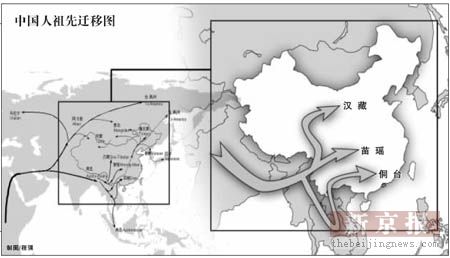 Li Hui commented that one branch of the early Asians, over 10,000 years ago, entered China's southeastern coastline with genetic marker M119. Li Hui, claiming the same ancestry as the Dai-zu and Shui-zu minorities of Southwestern China, firmly believed that his ancestors had dwelled in the Hangzhou Bay and the Yangtze Delta for 7-8 thousand years.
The people with the M119 marker would be the historical "Hundred Yue People".
The interesting theory adopted by Li Hui would be the migration of one branch of people who continued to travel non-stop along the Chinese coastline to reach the Liao-he River area of today's Manchuria.
Li Hui's speculation on basis of the DNA technology was an evolving process.
This would be likely the O2-haplogroup people, rather than the C-haplogroup or North Asia people whose historical presence in Asia could be dated 50,000 years ago, just after the earlier D-haplogroup people who were now mostly restricted in the area of Hokkaido, Japan, and known as the Ainu.
The C-haplogroup people developed into what this webmaster called by the Altaic-speaking people,
i.e., ancestors of the Mongols and Manchus.
What likely happened was that the O2-haplogroup people first travelled along the coast to reach Manchuria, and then traced back towards the south to reach the Yangtze area about 7-8000 years ago, where they evicted the O1-haplogroup people to the Southeast Asian islands.
At about the same time, the O3-haplogroup people, moving through the continent, reached today's western Liaoning at least 5000 years ago, or like 11,000 years ago on basis of the evidence of the pottery aging.
See the genetical analysis conducted by Li Hongjie of Jirin University on the remains of prehistoric people extracted from the archaeological sites.
Li Hui commented that one branch of the early Asians, over 10,000 years ago, entered China's southeastern coastline with genetic marker M119. Li Hui, claiming the same ancestry as the Dai-zu and Shui-zu minorities of Southwestern China, firmly believed that his ancestors had dwelled in the Hangzhou Bay and the Yangtze Delta for 7-8 thousand years.
The people with the M119 marker would be the historical "Hundred Yue People".
The interesting theory adopted by Li Hui would be the migration of one branch of people who continued to travel non-stop along the Chinese coastline to reach the Liao-he River area of today's Manchuria.
Li Hui's speculation on basis of the DNA technology was an evolving process.
This would be likely the O2-haplogroup people, rather than the C-haplogroup or North Asia people whose historical presence in Asia could be dated 50,000 years ago, just after the earlier D-haplogroup people who were now mostly restricted in the area of Hokkaido, Japan, and known as the Ainu.
The C-haplogroup people developed into what this webmaster called by the Altaic-speaking people,
i.e., ancestors of the Mongols and Manchus.
What likely happened was that the O2-haplogroup people first travelled along the coast to reach Manchuria, and then traced back towards the south to reach the Yangtze area about 7-8000 years ago, where they evicted the O1-haplogroup people to the Southeast Asian islands.
At about the same time, the O3-haplogroup people, moving through the continent, reached today's western Liaoning at least 5000 years ago, or like 11,000 years ago on basis of the evidence of the pottery aging.
See the genetical analysis conducted by Li Hongjie of Jirin University on the remains of prehistoric people extracted from the archaeological sites.
Northeast (southeastern Inner Mongolia)
Niuheliang, Lingyuan, the Hongshan Culture, 5000 YBP,
4 N, 1 C*, 1 O
North
Yuxian County (the Sanguan site), Hebei,
the Lower Xiajiadian Culture, 3400-3800 YBP, all O3
Combining Li Hui's study with the pottery excavation, we could see a clear path going north extending from around 15,000 years ago to 10,000 years ago.
Refer to Yaroslav V. Kuzmin's discourse on potteries
to see the path of migration of
proto-Mongoloids
from southwestern China (approx. 15,120+/-500 BP) to
Northeast Asia (Manchuria [13,000 BP, or c. 14,000 - 13,600 cal BC] and
Japan [c. 11,800-10,500 cal BC (c. 13,800 - 12,500 cal BP)]) to
Siberia (11,000 BP, or 11,200 - 10,900 cal BC).
In the timeframe of about 10,000 years, developing a genetic mutation to the marker M134, one branch of people who went direct north, per Li Hui, would penetrate the snowy Hengduan Mountains of the Tibetan-Qinghai Plateau to arrive at the area next to the Yellow River bends.
Owning to the cold weather environment, some physique, such as big noses, heavy lips and longer faces, developed among this group of people, i.e., ancestors of the Sino-Tibetans.
Splitting out of the northbound migrants would be those who went to the east with a new genetic marker M117, i.e., ancestors of the modern Han [a misnomer as the proper term should be Sino-Tibetan, nor the later Sinitic] Chinese.
We could say that our Sino-Tibetan ancestors forgot that they had penetrated northward the Hengduan Mountains from the Indo-China "CORRIDOR" in today's Burma-Vietnam.
"Walking down Mt Kunlun", i.e., the "collective memory of the ethnic Han Chinese" throughout China and the Southeast Asian Chinese communities, that was echoed in Guo Xiaochuan's philharmonic-agitated epic, would become the starting point of the eastward migration which our Chinese ancestors remembered.
(Li Hui grouped the 3000-year-old Chu and Qi people in the same category as the Han Chinese, albeit meeting the ancient classics' records as to the Qi statelet's lineage from the Qiangic-Tibetan Fiery Lord.
According to
https://onlinelibrary.wiley.com/doi/full/10.1111/j.1759-6831.2012.00244.x
"the frequencies of the three main subhaplogroups of O3-M122: O3a1c-002611, O3a2c1*-M134, and O3a2c1a-M117 in Han Chinese are 16.9%, 11.4%, and 16.3%, respectively (Yan et al., 2011).
The northward migration of haplogroup O3a1c-002611 started about 13 thousand years ago (KYA). The expansions of subclades F11 and F238 in ancient Han Chinese began about 5 and 7 KYA immediately after the separation between the ancestors of the Han Chinese and Tibeto-Burman.
Haplogroup O3a1c-002611 and O3a1c1-F11 started their northward migration about 12 KYA from Southeast Asia, along with other O3-M122 lineages, and reached the upper and middle Yellow River basin. About 7 KYA, haplogroup O3a1c2-F238 originated in the ancestors of modern Sino-Tibetan populations. About 6 KYA, the Han Chinese split from the Proto-Sino-Tibetan, and started their migration to the east and south (Su et al., 2000b). About 5 KYA, haplogroup O3a1c1-F11 experienced rapid expansion, probably in the Eastern Han Chinese, with recent gene flow with surrounding populations and eventually became prevalent in different ethnic groups in East Asia.)
Li Hui then pointed out that the ancient Wu people, with M7 genetic marker, came to the lower Yangtze area about 3000 years ago.
While Li Hui claimed that the M7 Wu people had split away from the northbound M134 Sino-Tibetan people, the historical Chinese classics pointed out that the Wu Statelet was established by two uncles of Zhou Dynasty King Wenwang, i.e., migrants from the Yellow River area.
The general layout by Lu Hui seems to have corroborated with Scholar Luo Xianglin's claim that early Sino-Tibetan people originated from the Mt Minshan and upper-stream River Min-jiang areas of today's Sichuan-Gansu provincial borderline and then split into two groups, with one going north to reach the Wei-shui River and upperstream Han-shui River of Shenxi Province and then eastward to Shanxi Province by crossing the Yellow River.
--Though, this webmaster's analysis of China's prehistory shows that the Sino-Tibetan people who moved to the eastern coast was one group, with the future Tibetans being actually the exiles to Northwest China from eastern and central China during the era of Lord Shun. Namely, the split of the Sinitic and proto-Tibetan people occurred prior and during the exile in the late 3rd millennium B.C.E.
(George Driem proposed that the Sino-Tibetans had splitoffs like the Western Tibeto-Burmans and the Eastern Tibeto-Burmans, with the Eastern Tibeto-Burmans forming two groups of northern and southern, who in turn split into the Northwestern Tibeto-Burmans, the Northeastern Tibeto-Burmans, the Southwestern Tibeto-Burmans, and the Southeastern Tibeto-Burmans, with a claim that the western offshoots went all the way to the Kashmir before returning east along the northern slope of the Himalayas to have a reunion with their cousins and that the Northeastern Tibeto-Burmans were the Sinitic people.)
What Li Hui did not touch on in his earliest studies were the cousin tribes of the Sino-Tibetans, namely, the Hmong-miens and Mon-khmers.
As noted at http://www.ncbi.nlm.nih.gov/pmc/articles/PMC3164178/, "A clear hierarchical structure (annual ring shape) emerged in the network of O3a3b-M7 (Fig. 2B), in which MK (Mon-Khmers) haplotypes lay at the center of the network (immediately next to the origin), HM (Hmong-Mien) haplotypes were distributed at the periphery to the MK haplotypes, and the ST (here the subfamily Tibeto-Burman) haplotypes were only found further away from the origin."
|
|
* In Commemoration of China's Fall under the Alien Conquests in A.D. 1279,
A.D. 1644 & A.D. 1949 *
 U.S.S.R./Comintern Alliance with the KMT & CCP (1923-1927)
U.S.S.R./Comintern Alliance with the KMT & CCP (1923-1927)
 Korean/Chinese Communists & the 1931 Japanese Invasion of Manchuria Korean/Chinese Communists & the 1931 Japanese Invasion of Manchuria
American Involvement in China: Soviet Operation Snow, IPR Conspiracy, Dixie Mission, Stilwell
Incident, O.S.S. Scheme, Coalition Government Crap, Amerasia Case & The China White Paper
* Stay tuned for "Republican China 1911-1955: A Complete Untold History" *
|
|
Zou Rong's Revolutionary Army;
Shin Kyu Sik's
Shrine (Spirit, Kunitama) of Korea
|
This snippet is for sons and daughters of China:
Heed the sons & ministers' agony and sorrow of our ancestors who died or lived through the Mongol, Manchu and Soviet-Chicom conquest
and
the Yongjia, Jingkang and Jiashen cataclysms !
Jeanne d'Arc of China:
Teenager girl Xun Guan breaking out of the Wancheng city to borrow the relief troops in the late Western Jinn dynasty;
Liu-Shao-shi riding into the barbarian army to rescue her husband in the late Western Jinn dynasty;
teenager girl Shen Yunying breaking into Zhang Xianzhong's rebels on the horseback to avenge on father's death in the late Ming dynasty.
China's Solitary and Lone Heroes:
Nan Jiyun breaking out of the Suiyang siege and charging back into the city in the Tang dynasty;
Zhang Gui & Zhang Shun Brothers breaking through the Mongol siege of Xiangyang in the Southern Soong dynasty;
Liu Tiejun breaking through three communist field armies' siege of Kaifeng in the Republican China time period;
Zhang Jian's lone confrontation against the communist army during the June 3rd & 4th Massacre of 1989.
|
|
|
|
|
|
|
|
|
|
Sovereigns & Thearchs;
Xia-Shang-Zhou dynasties;
Zhou dynasty's vassalage lords;
Lu Principality lords;
Han dynasty's reign years
(Sexagenary year conversion table-2698B.C.-A.D.2018; 247B.C.-A.D.85)
|
|
The Sinitic Civilization - Book I is
available now at
iUniverse,
Barnes & Noble,
Amazon,
Google Play|Books
and
Nook.
The Sinitic Civilization - Book II is available at
iUniverse,
Amazon and Barnes & Noble.
Check out the 2nd edition preface that had an overview of the epact adjustment of the quarter remainder calendars of the Qin and Han dynasties, and the 3rd edition introductory that had an overview of Sinitic China's divinatory history of 8000 years.
The 2nd edition, which realigned the Han dynasty's reign years strictly observing the Zhuanxu-li calendar of October of a prior lunar year to September of the following lunar year, also cleared this webmaster's blind spot on the authenticity of the Qinghua University's Xi Nian bamboo slips as far as Zhou King Xiewang's 21 years of co-existence with Zhou King Pingwang was concerned, a handicap due to sticking to Wang Guowei's Gu Ben Bamboo Annals and ignoring the records in Kong Yingda's Zheng Yi.
Stayed tuned for Book III that is to cover the years of A.D. 86-1279, i.e., the Mongol conquest of China, that caused a loss of 80% of China's population and broke the Sinitic nation's spine.
Preview of annalistic histories of the Sui and Tang dynasties, the
Five Dynasties, and the two Soong dynasties
could be seen in
From the Khitans to the Jurchens & Mongols: A History of Barbarians in Triangle Wars and Quartet Conflicts
(The Barbarians' Tetralogy - Book III: available at iUniverse;
Google;
Amazon;
B&N).
(A final update of the civilization series, that is scheduled for October 2022, would put back the table of the Lu Principality ruling lords' reign years, that was inadvertently dropped from Book I during the 2nd update.)
|
|
Book II - Table of Contents:
Chapter XXVIII: The Qin Empire & The Unification of China p.323
Campaigns to the South p.331
Chapter XXXI: The Han Dynasty’s Chronological History p.367
Relationship with the Southern Statelets p.397
Chapter XXXVI: The Western Expedition, The Kunlun Mountain & Shan Hai Jing p.489
Unearthly Things in the Mountains’ Component of The Legends of Mountains & Seas p.501
The Divination Nature and Age of the Seas’ Component of The Legends of Mountains & Seas p.506
Chapter XXXVII: The Legends of Mountains & Seas (Shan Hai Jing) & The Ancient Divination p.520
|
|
The Southern Minority People
The natives living in the mountains of southwestern China number the most variety in today's China. Especially noteworthy would be Yunnan Province, i.e., the original habitation of the ancient Nan-zhao & Da-li statelets.
Among 56 ascertained ethnic groups, Yunnan Province was in possession of 26 groups, comprising of one third of the provincial population. Specific to Yunnan Province would be about 16 groups, while the other 10 lived across multiple provinces and borders.
Dwelling in Yunnan would be the following ethnic groups: Lahu-zu, Pumi-zu, Nu-zu ('nu' meaning angry, that derived from the Nu-jiang river or the upper Salween), Dulong-zu (i.e., lonely dragon), and Jinuo-zu. Other ethnic groups in Yunnan that span across provinces would be Zang-zu (Tibetan), Hui-zu (Muslim), Miao-zu (the same 'miao' character as SanMiao), Zhuang-zu, and Yao-zu.
Separately, the provinces of Guizhou, Guangxi, Guangdong, Hunan and Sichuan harbored numerous other ethnic groups.
In Guizhou Province could be found Shui-zu (water), Gelao-zu, and Buyi-zu, in addition to cross-border groups like Miao-zu, Yi-zu, Dong-zu, Zhuang-zu, and Yao-zu.
In Guangxi Province could be found Mulao-zu, Maonan-zu, Jing-zu, in addition to cross-border groups like Miao-zu, Dong-zu, Zhuang-zu, and Yao-zu. (Jing-zu is the majority ethnic group in today's Vietnam.)
Zhuang-zu and Yao-zu also dwelled in Guangdong and Hunan provinces.
In the south and southeast, Hainan-dao Island possesses the Li-zu minority. Fujian & Zhejiang provinces possess the She-zu minority.
Gaoshan-zu (high mountain ethnic group) would be in Fujian Province & the Taiwan Island.
Per Scholar Zhan Quanyou ("The Culture of the Nan-zhao & Da-li Statelets", 2002 edition, Sichuan People's Press, Chengdu, Sichuan),
Yi-zu's ancestor would be Wu-man (i.e., the black barbarian);
Bai-zu's ancestor would be Bai-man (i.e., the white barbarian);
Dai-zu's or Thai ancestor would be Jin-chi-man (i.e., the gold teeth barbarian), Yin-chi-man (i.e., the silver teeth barbarian), Hei-chi-man (i.e., the black teeth barbarian) and Mang-man;
Bulang-zu and De'ang-zu belonged to Pu-zi-man;
Wa-zu belonged to Wang-man;
A'chang-zu belonged to Xunchuan-man;
Jingbo-zu belonged to Luo-xing-man (i.e., nude body barbarian);
Naxi-zu belonged to Mo-xie-man;
Lisu-zu belonged to Shi-man and Shun-man; and
Hani-zu belonged to He-man.
(Here, Bai or Wu has nothing to do with the color of the skin, and both groups belonged to Sino-Tibetan Di[1]-Qiang[1] people.)
Zhan Quanyou further grouped Dai-zu under the Bai-yue or Hundred Yue Family; Bulang-zu, De'ang-zu and Wa-zu under Bai-pu or the Hundred Pu[2] Family; A'chang-zu, Jingbo-zu, Naxi-zu, Lisu-zu, Bai-zu, Yi-zu and Hani-zu under the Di[1]-Qiang[1] Family.
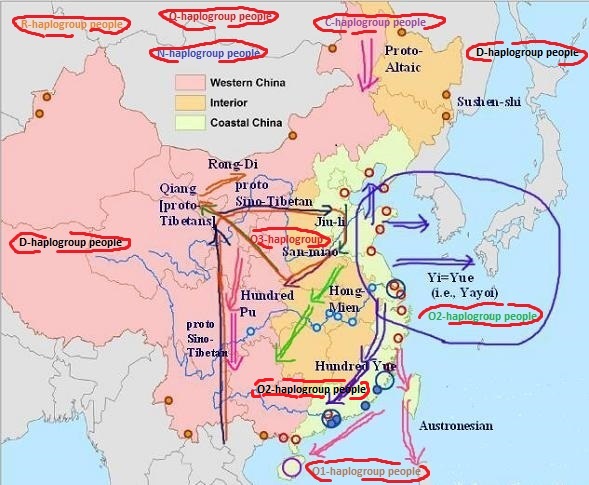
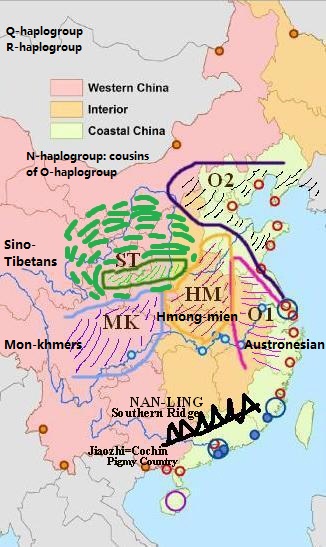
Originally, southwestern China was the domain of the Hundred Pu people who had trades with the Ba-shu people in today's Sichuan basin and the Hundred Yue people in the Pearl River delta.
Upon Zhang Qian's return from the west after a span of 13 years, Emperor Wudi first ordered 4 expeditions to the southwest of China to search for a route to India. This was because Zhang Qian reported to the emperor that he saw 'jujiang' (betel pepper) soy sauce (from Zangke-jiang, i.e., today's Beipan-jiang River, a place in northern Guizhou and near today's Sichuan Province), bamboo products from Qiong (in today's Sichuan), and 'Shu' (today's Sichuan) clothing which the Bactria merchants said were shipped over from India.
Emperor Wudi then ordered expeditions to the west in 122 B.C., but the expeditions, under the command of Wang Ranyu, Bai Shichang and Lv Yueren et al., failed to find a path through the mountains.
When passing through the southwestern barbarian states of Dian-yue and Ye-lang, the Han emissary was asked a question about the size of the Han empire versus their domains.
King Chang-qiang of the Dian-guo statelet purported dispatched over a dozen search teams to the west on behalf of the Han emissaries in search of a path but reported back one year later to state that they were obstructed by the Kunming-guo statelet.
Han emissary, Tang Meng, when visiting today's Canton area, noted that Nan-Yue or the Southern Yue was using some 'jujiang' (betel pepper) soy sauce --which Han emissary Zhang Qian had observed while visiting today's Afghanistan in Central Asia.
Tang Meng inquired about the source, and came up with the idea of conquering the Nan-yue state by borrowing an army from the barbarians in Southwest China to sail down the Zangke River, which probably connected with the West River of today's Guangdong Province.
The Han emissary said that the Zangke River, by which the Yelang Statelet dwelled, flew into Panyü of today's Guangdong Province.
In 135 B.C., Tang Meng was dispatched to the Yelang Statelet as a magistrate. The Han court, prior to zoning the Zangke-jun Commandary, had organized part of the southwestern territory into two counties of Nan-yi and Ye-lang, with one 'du wei' in charge.
The Yelang Statelet, with 100,000 strong army, was targeted by Han as an ally in the war on the Southern Yue.
Later, on the pretext that the Yelang state killed a Han emissary, the Han army killed a chieftain of the southern barbarians and took over the territory as the Zangke Commandary, namely, today's Guizhou Province, in 111 B.C.
During Han Emperor Chengdi's reign (28-25 B.C.), the Yelang state rebelled against the Han rule. The Han armies, commanded by Chen Lishen the new magistrate for the Zangke-jun Commandary, killed chieftain Xing4 of the southern barbarians and took over the territory of the Zangke Commandary, namely, today's Guizhou Province.
Dominance Of the Tibeto-Burman language
Zhan Quanyou cited one school of thought: the people dwelling to the west and northwest of Yunnan Province, i.e., the Tibetans, Yi-zu, Bai-zu, Hani-zu, Naxi-zu, Lisu-zu, and Lahu-zu, all belonged to the descendants of the ancient Di-Qiang people linguistically, i.e., the Tibetan branch and Yi-zu branch of the Tibeto-Burman language family.
The interesting thing about southwestern China will be the so-called the Tibeto-Burman language. As detailed in the section on Tibetans, the Tibetans belong to a larger language family called Sino-Tibetan.
The Tibeto-Burman branch consists of 2-300 languages spoken primarily in the uplands of Inner, South, and Southeast Asia, and could be found from Sichuan and Qinghai in the north to the southern extremity of Myanmar (Burma), northwestern Vietnam, and northern Pakistan in the west. Tibetans are related to the minorities in today's southwestern China, for example, Mo-so & Lo-lo (aka Yi-zu minority) people. Mo-so & Lo-lo peoples are pockets of minorities who had survived thousands of years of human migrations from north to south. Most of the early southerners would have been pushed out of southern China a long time ago, and a migration path could be separately painted for the Polynesians, the Southeast Asians in the Philippines and Indonesia/Malaysia, and the peoples in Vietnam, Burma and Thailand. Note that there already had occurred early waves of migrations hundreds of years before the Mongols destroyed the independent state of Nan-Zhao (Da-Li) in AD 1253. Today's Shan and Thai peoples in Burma and Thailand are refugees of Nan-Zhao Statelet.
Brief Introduction To the Southern Minorities
In Yunnan Province, several tribes lived along the banks of Du-long [lonely dragon] River & Nujiang River [angry river or En-mei-kai River in Burma].
Du-long River flows 150 kilometers southward in parallel with Nujiang River, with ridges on two banks reaching as high as 3000-4000 meters.
Among Dulong-zu, Nu-zu, Pumi-zu, Lisu-zu, Bai-zu, Yi-zu, Jingpo-zu and Wa-zu who dwelled along Nujiang River, Dulong-zu & Nu-zu were in seclusion.
Dulong-zu people, numbering 4800 people by 1982 census, dwelled inside of Du-long River Valley, with outside world contacts through south valley mouth for only three months per year. Dulong-zu had a custom of killing ox for oblation; however, they rarely could afford to buy an ox. Dulong-zu had a custom of marriage between niece and aunt across all villages.
Nu-zu, across the mountain and by the bank of Nujiang River, possessed 22000 people by 1982 census.
Nu-zu have 5 months' time for connecting with the outside world. Before iron spread there in early years of R.O.C., Nu-zu used stone tools for plowing. Nu-zu have a custom of celebrating long-lasting marriages, similar to diamond memorial.
Lisu-zu, to the south of Nu-zu, was part of ancient Wu-man barbarians, aka Li-man in Tang Dynasty records. Lisu-zu could have migrated to Nujiang from Lancangjiang & Jinshajiang river area during Qing Dynasty time period. Lisu-zu claimed origin in Tian-jin, i.e., Chengdu of Sichuan Prov. Lisu-zu people love sliding across river by hanging cord, dancing on charcoal fire, and climbing knife ladder, a custom passed on from Ming Dynasty time period when they helped defeat Burmese tribes. They have a habit of 'gong fang' (i.e., public house) for dating, and like to drink wine via same bowl.
Bai-zu have 1 million plus by 1982 census data. Duan Siping of Dali-guo Statelet (AD 937-1253) originated in Bai-man, i.e., ancestors of today's Bai-zu. There are two groups of Bai-zu, mountainside Bai-zu and plains Bai-zu.
On the west bank of Nujiang and two banks of Lancangjiang, there are small number of Bai-zu communities. Bai-zu, around Erhai area, produced numerous literatures, epics and chronicles.
Pumi-zu, numbering less than 20,0000 per 1982 census, had no autonomous region of their own. However, Pumi-zu possessed an ancient chronicle entitled 'kai lu jing' [Classic Of Paving Road]. Pumi-zu, at the burial time, liked to use sheep for hint as to soul's willingness to return north. Pumi-zu could have origin in ancient Xi-fan [western barbarians], aka Ba-ju. Cai Ah-dong claimed that they could have origin in ancient Xi-rong or Rong-qiang people.
Pumi-zu called themselves Pei-mi (white man), and Cai Ah-dong stated that they were the same as Bai-lang-guo (white wolf country) which sought vassalage with Han Emperor Mingdi (reign 58-750).
Pumi-zu have beautiful clothes, and wear pants and skirts from age 13 onward, and they possessed strict guidelines as to inter-marriages between clans.
Close to Burma, Jing-po-zu, beyond Gaoli-Gongshan mountain ranges, possessed 100,000 per 1982 census. Jing-po-zu had an autonomous region with Dai-zu. Jing-po-zu could have origin in Xunchuan tribe of Tang Dynasty time period. Like La-hu-zu, Jing-po-zu hunted tigers and lived on ridges. Jing-po-zu fought British in late 19th century.
Jing-po-zu are fond of bride abduction.
Dai-zu, known as Thai in Thailand, with a population of 800,000 plus per 1982 census, live in the famous xi-shuang-ban-na district. Dai-zu claimed to have originated from ancient Bo-ren ('bo' meaning peace and freedom in Dai). Dai-zu belonged to Zhuang-Dong branch, while Yi-zu belonged to Tibetan-Burmese branch. Per Cai Ah-dong, Dai-zu could be ancient Jin-chi (gold teeth) barbarians. Dai-zu could be classified into two groups: Han-bai-yi [land Dai] in west Yunnan and Shui-bai-yi [water Dai] in southern Yunnan. Dai-zu sought vassalage with Song Emperor Xiaozong during Chunxi Era 7th Year, i.e., AD 1180. It would be Dai calendar 542nd year. Song court conferred King of Dai with a tiger-head seal and 'dao' (knife) surname. Cai Ah-dong stated that Dai-zu calendar could be as old as Zhou Dynasty. Today's Dai-zu possessed a local chronicle dating from 1180 onward. Dai-zu eat all foods, including insects, are good at agriculture, possess good housing styles, and possess the famous Po-shui-jie [water pouring] festival.
Wa-zu, living in stone age not long ago, used to killing each other between villages. Cai Ah-dong stated that Wa-zu could be Wang-ren or Ha-la in ancient times. Wa-zu like to make big dangling ears.
Lahu-zu, meaning tiger-hunting tribe and numbering 34,000 by 1982, lived on two banks of Lancangjiang River. Lahu-zu could be Kunming-man barbarians and might be Qiangic. Lahu-zu at one time fought British invasion.
Bulang-zu, numbering 58,000 by 1982, could be from ancient Pu, Pu-zi-man, Ailaoyi, Min-pu, or Luo-pu. Cai Ah-dong stated that Zhuge Liang of Three Kingdoms time period might have forced them into a migration.
Benglong-zu (i.e., De'ang-zu), being a neighbor of Bulang-zu, numbered 12000 per 1982 census. De'ang-zu are a tea growing people. Cai Ah-dong stated that De'ang-zu could be Pu in Han-Jinn dynasties, Mang-man in Sui-Tang dynasties, Jinchi-guo in Song-Yuan dynasties, and Pu-ren or Ha-la in Ming-Qing dynasties.
Cai Ah-dong stated that Benglong-zu (De'ang-zu), Bulang-zu and Wa-zu all belonged to ancient Pu people, and they are close to Khmer in language.
A-chang-zu, numbering 20,400 per 1982 census, could be ancient Mang-man barbarian and Ailaoguo statelet. They could also be known as Er'chang-man or Xunchuan-man. They like to eat snakes and are good at making A-chang-dao knife.
Ji-nuo-zu produced tea similar to De'ang-zu and Dai-zu, and their language was similar to Yi-zu language. Numbering 12000 per 1982 census data, Ji-nuo-zu claimed to be descendants of the soldiers of Kong Ming (i.e., Zhuge Liang of Three Kingdoms time period), stating that their ancestors were lost while following Kong Ming in southern campaigns. Ji-nuo-zu possessed a Kong-ming-mao hat, and they inherited an "abduction game" for teenagers reaching adulthood age 16.
Hani-zu, numbering 1,060,000 per 1982 census, would be the biggest group in Yunnan Prov. Cai Ah-dong claimed that they could be He-yi barbarian of 3rd century BC in Daduhe River area, or He-man barbarian in Tang Dynasty, or 37-barbarian-groups in Yuanjiang River area during Dali Statelet time period.
Na-xi-zu numbered 240000 per 1982 census.
The interesting thing about Na-xi-zu would be so-called legend and customs of "nu-er-guo" (i.e., women statelet): They possessed "a-zu-hun" whereby women, never married to a single man, would just accept whoever man visits her house. Na-xi-zu, per Cai Ah-dong, could be ancient 'Hao' or 'Mosha-yi' barbarian.
 The Scourge-of-God-Tetralogy.
Book III of
The Barbarian Tetralogy, i.e., this webmaster's barbarism series, is finally released in September of 2022 by iUniverse. This barbarism series would be divided into four volumes covering the Huns, the Xianbei, the Turks, the Uygurs, the Khitans, the Tanguts, the Jurchens, the Mongols and the Manchus.
Book I of the tetralogy would extract the contents on the Huns from
The Sinitic Civilization-Book II,
which rectified the Han dynasty founder-emperor's war with the Huns on mount Baideng-shan to A.D. 201 in observance of the Qin-Han dynasties' Zhuanxu-li calendar.
Book II of the Tetralogy would cover the Turks and Uygurs.
And
Book IV would be about the Manchu conquest of China.
The Scourge-of-God-Tetralogy.
Book III of
The Barbarian Tetralogy, i.e., this webmaster's barbarism series, is finally released in September of 2022 by iUniverse. This barbarism series would be divided into four volumes covering the Huns, the Xianbei, the Turks, the Uygurs, the Khitans, the Tanguts, the Jurchens, the Mongols and the Manchus.
Book I of the tetralogy would extract the contents on the Huns from
The Sinitic Civilization-Book II,
which rectified the Han dynasty founder-emperor's war with the Huns on mount Baideng-shan to A.D. 201 in observance of the Qin-Han dynasties' Zhuanxu-li calendar.
Book II of the Tetralogy would cover the Turks and Uygurs.
And
Book IV would be about the Manchu conquest of China.
From the Khitans to the Jurchens & Mongols: A History of Barbarians in Triangle Wars and Quartet Conflicts
, i.e., Book III of
the Scourge-of-God-Tetralogy,
focused on the Khitans, Jurchens and Mongols, with the missing one-year history of the Mongols' Central Asia campaigns rectified.
This webmaster, other than the contribution to the Sinology studies in rectifying the Huns' war to 201 B.C., and realigned the missing one-year history of the Mongol Central Asia war, had one more important accomplishment, i.e., the correction of one year error in the Zhou dynasty's interregnum (841-828 B.C. per Shi-ji/840-827 per Zhang Wenyu) in
The Sinitic Civilization-Book I, a cornerstone of China's dynastic history.
|
The Scourges of God: A Debunked History of the Barbarians
From the Khitans to the Jurchens & Mongols: A History of Barbarians in Triangle Wars and Quartet Conflicts
(The Barbarians' Tetralogy - Book III)
Epigraph,
Preface,
Introduction,
Table of Contents,
Afterword,
Bibliography,
References,
Index
|
In western and southwestern China, the Tibetans, together with the Nanzhao auxiliary army, attacked and sacked [Yue]Xi-zhou in A.D. 756-757. Before that, the Tang court supported Pi-luo-ge (r. A.D. 728-748), i.e., Ge-luo-feng’s father, in defeating the rival tribes and reuniting the six tribes from A.D. 737 to 738, and conferred Pi-luo-ge the title of King Yunnan-wang with the ‘Guiyi’ (returning loyalty) given name. Before that, the Tang army in A.D. 729 defeated the Tibetans (who ruled the six Zhao tribes in today’s western Yunnan since A.D. 704), sacked Yanyuan (salt source), and took control of three tribes of Yuexi-zhao, Mengxi-zhao and Mengshe-zhao (‘Meng’-surnamed southern Zhao [king] tribe - that was located near today’s northern Burma). Pi-luo-ge’s great grandfather was Black Mywa (i.e., Wu-man) Xinuluo (Senola), i.e., King Qijia-wang (outstanding king) who founded the Great Meng state, and took control of Zhang Lejinqiu’s White Mywa (Bai-man) in the Erhai Lake and Cang-shan Mountain area. Zi Zhi Tong-jian stated that King [Meng-]Guiyi’s ancestral Mengshe-zhao tribe (at Weishan of Yunnan) came from the Ailao-yi tribe that dwelled to the west of Yaozhou; and after conquering the Baizi-guo state at Baiya (white cliff, Midu of Yunnan) in A.D. 648, reached the Erhai Lake. In A.D. 734, Tang ordered ‘Jiannan jiedu-shi’ Wang Yu to relay the decree to offer Ge-luo-feng the name of Meng-Guiyi, with manifest support for conquering the rest of pro-Tibetan tribes. In A.D. 737, Tang sent ‘yu-shi’ Yan Zhenghui to helping the Mengshe-zhao to defeat the He-maan (riverside barbarians) tribes and unite the six Zhao tribes including Langqiong-zhao, Tengdan-zhao and Shilang-zhao; in A.D. 738, Tang conferred onto Ge-luo-feng the title of King Yunnan-wang, a name derived from the Shu-Han dynasty’s Yunnan-jun commandery; and in A.D. 748, Tang sent ‘Yaozhou dudu’ Li Bi4 (Li Mi4) to helping the Nanzhao king in defeating the ‘Cuan’-surnamed tribes (Cuan-maan/Mywa) in today’s eastern Yunnan, a local power dating from the Cuan migrants from northern China as far back as the Han dynasty, which used to rule over both the Black Mywa (Wu-man) and White Mywa (Bai-man). Years back, in A.D. 745, King Cuan-gui-wang killed ‘Yuexi dudu’ Zhu Lingqian who constructed the Anning-cheng fort as a relay point for the Tang-Vietnam Butou-lu path, that extended from Annam to Butou (Jianshui of Yunnan) to Anning to Rongzhou (Yibin of Sichuan).
Before the An Lushan rebellion, Tang China lost ally Nanzhao to the Tibetans in southwestern China, when Nanzhao King Meng Pi-luo-ge rebelled, attacked Yaozhou and killed ‘Yunnan tai-shou’ Zhang Qiantuo in A.D. 750 and ‘Jian-nan jiedu-shi’ Yang Guozhong’s deputy Xianyu Zhongtong was defeated by the allied Nanzhao and Tibetan army while pushing to the Nanzhao capital city of Taihe-cheng (near Dali), and subsequently new Yunnan governor Li Mi suffered another debacle in A.D. 753. Before the breakup, the Tang court supported Nanzhao chieftain Pe-luo-ge (r. A.D. 728-748), i.e., Ge-luo-feng’s father, in defeating the rival tribes and reuniting the six tribes from A.D. 937 to 938; in A.D. 748, Tang sent ‘Yaozhou du-du’ Li Mi to helping the Nanzhao king in defeating the ‘Cuan’-surnamed tribes (Cuan-maan/Mywa) in today’s eastern Yunnan; and in A.D. 749, Tang ‘Annan (Annam) du-hu’ Heh Lüguang commanded an army from today’s Vietnam to attack the ‘Maan’ barbarian tribal states of Yunnan, and re-erected the bronze pillars at Anningcheng (Eryuan, west of Kunming), a place where Han dynasty General Ma Yuan erected the pillars. Xianyu Zhongtong’s Tang army suffered a loss of 60,000 in A.D. 751 in the hands of Nanzhao; in A.D. 752, Jia Quan and Heh Lüguang’s five ‘Lingnan’ prefectures’ army suffered a debacle in the campaign against Nanzhao; and the Tang army under the command of Li Mi, Sadao Xuanxun and Heh Lüguang suffered a loss of 70,000 troops in the campaign against Nanzhao in A.D. 753. The Tibetans frequently called on Nanzhao to pincer-attack Tang China till Nanzhao switched loyalty to Tang China in A.D. 793, attacked and sacked the Tibetan-controlled city of Kunming in A.D. 795, repelled a Tibetan counterattack against Yunnan in A.D. 800 in cooperation with satrap Wei Gao, allied with Tang China and defeat the Tibetans, Sogdians and Arabs (purportedly Abbasid slave soldiers) in the spring of A.D. 802, spring, and participated in a joint military action with satrap Wi Gao in intruding into the Tibetan territory in A.D. 802 and taking over seven Tibetan cities and five forts including Yazhou as well as capturing Tibetan prime minister (‘lun-mang-re’) who was Tibetan King Tride Songtsen’s ‘dong-bi (eastern border) wu-dao (five circuits) jiedu qunmu (various shepherding) da-shi’, which led to the Tibetans’ striking the Changqing Peace Accord (seen on the Lhasa Doring Stelle) with Tang China in A.D. 822.
|
|
Yi-zu minority, numbering 5,000,000 per 1982 census, used to possess a caste society similar to Indians. They possessed two groups, i.e., Bai-yi (i.e., White Yi-zu) of Western Cuan Family and Hei-yi (i.e., Black Yi-zu) of Eastern Cuan Family. Note that white or black has nothing to do with skin, but Black Yi-zu's claim that they had black bones of noble blood lineage. Black Yi-zu used to require that all Yi-zu people must recite their family lineages by tracing dozens of generations backward, and hence Black Yi-zu could usually catch fleeing White Yi-zu slaves by exposing the loopholes of the family heritage.
Yi-zu could be traced to Na-man or Xinan-yi of Han Dynasty time period, and later Cuan-man barbarians controlled by Cuan family. Yi-zu would be equivalent to Wumeng-man barbarians that established the Nanzhao Statelet, and they had a strict slave society that continued well into 20th century. (There are Western "racial approach" experts who tried to dig up a non-Mongoloid origin for the Yi-zu minority. Alternatively, some Chinese scholar had compared the Yi-zu people to the Tanguts of Xi-xia [Western Xia] Dynasty, claiming that they all possessed dark face with red decoration and comparatively higher nose bridge.)
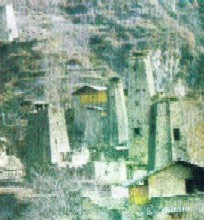 Qiang-zu, numbering 112000 per 1982 census, possibly the most orthodox descendant of ancient Qiangic people, now dwell mostly around Minjiang River area of Sichuan Prov. A good website about the today's Qiangs would be http://www.infomekong.com/p_group_Tibetan_1.htm.
Qiang-zu are fond of building their houses into citadels, per Cai Ah-dong, a tradition most likely resulting from historical confrontations with people around them.
Qiang-zu, numbering 112000 per 1982 census, possibly the most orthodox descendant of ancient Qiangic people, now dwell mostly around Minjiang River area of Sichuan Prov. A good website about the today's Qiangs would be http://www.infomekong.com/p_group_Tibetan_1.htm.
Qiang-zu are fond of building their houses into citadels, per Cai Ah-dong, a tradition most likely resulting from historical confrontations with people around them.
Miao-zu, numbering 5 million per 1982 census, are said to be descendants of ancient Lord Chiyou. In accordance with Luu Simian dissertation, San-Miao, with 'miao' meaning descendants, could point to three ancient clans and tribes of Dihong-shi, Jinyun-shi, Shaohao-shi as their ancestors. Miao-zu's epic talked about "westward migration", which pointed to the fact that they had probably dwelled more to the center and east of China in ancient times. Miao-zu like to wear beautiful clothes and hats.
Buyi-zu, numbering 2100000 per 1982 census, could be ancient Yelang-guo Statelet of Guizhou Province, and the later ancient Luo-yue or Lao-ren [Liao-ren] people.
Cai Ah-dong claimed that Luo-yue, Lao-ren [Liao-ren] and Xi-ou had converged to the ancient Zangke & Yelang statelets, with Zangke dwelling around the Hong-shui River. The Buyi-zu people are fond of blowing the ancient "chui sheng" musical instruments that were often utilized during the Spring & Autumn time period of Zhou Dynasty.
Dong-zu, numbering 142,5000 per 1982 census, was said to be a branch of the Hundred Yue people and had migrated from Jiangxi Province to today's Guangxi Prov. They had a custom of building "diaojiaolou", i.e., a kind of house that sit on one single pole. Cai Ah-dong claimed that Dong-zu could be ancient Tong-miao barbarian.
Shui-zu, numbering 286000, lived apart from each other. They could be ancient Xi-dong in Sui Dynasty time period and could be possibly Luo-yue descendants. Shui-zu has a language of 200 characters that are, in fact, the inverse shape of Han Chinese characters. Shui-zu have similar festivals as Han Chinese, and they are good at making strong liquor that is equiv to "maotaijiu" liquor.
Ge-lao-zu, numbering 510000 per 1985 census, dwelled in Zunyi of Guizhou Province, and they were said to be descendants of San Miao. Ge-lao-zu were known as Lao-zi [Liao-zi] in ancient times and they are fond of pulling out upper teeth as beauty.
 The Scourges-of-God Tetralogy
would be divided into four volumes covering
Hsiung-nu (Huns), Hsien-pi (Xianbei), Tavghach
(Tuoba), Juan-juan (Ruruans), Avars, Tu-chueh (Turks), Uygurs (Huihe), Khitans, Kirghiz, Tibetans, Tanguts, Jurchens, Mongols and Manchus and
southern barbarians.
Book I of the tetralogy would extract the contents on the Huns from
The Sinitic Civilization-Book II,
which rectified the Han dynasty founder-emperor's war with the Huns on mount Baideng-shan to A.D. 201 in observance of the Qin-Han dynasties' Zhuanxu-li calendar.
Book II of the Tetralogy would cover the Turks and Uygurs.
And
Book IV would be about the Manchu conquest of China.
The Scourges-of-God Tetralogy
would be divided into four volumes covering
Hsiung-nu (Huns), Hsien-pi (Xianbei), Tavghach
(Tuoba), Juan-juan (Ruruans), Avars, Tu-chueh (Turks), Uygurs (Huihe), Khitans, Kirghiz, Tibetans, Tanguts, Jurchens, Mongols and Manchus and
southern barbarians.
Book I of the tetralogy would extract the contents on the Huns from
The Sinitic Civilization-Book II,
which rectified the Han dynasty founder-emperor's war with the Huns on mount Baideng-shan to A.D. 201 in observance of the Qin-Han dynasties' Zhuanxu-li calendar.
Book II of the Tetralogy would cover the Turks and Uygurs.
And
Book IV would be about the Manchu conquest of China.
From the Khitans to the Jurchens & Mongols: A History of Barbarians in Triangle Wars and Quartet Conflicts
, i.e., Book III of
the Scourge-of-God-Tetralogy,
focused on the Khitans, Jurchens and Mongols, as well as provided the annalistic history on the Sui and Tang dynasties, the
Five Dynasties & Ten Kingdoms, and the two Soong dynasties.
Similar to this webmaster' trailblazing work in rectifying the Han dynasty founder-emperor's war with the Huns to 201 B.C. in The Sinitic Civilization - Book II,
this Book III of the Scourge-of-God-Tetralogy
collated
the missing one-year history of the Mongols' Central Asia campaigns and restituted the
unheard-of Mongol campaign in North Africa.
|
The Scourges of God: A Debunked History of the Barbarians" - available at iUniverse|Google|Amazon|B&N
From the Khitans to the Jurchens & Mongols: A History of Barbarians in Triangle Wars and Quartet Conflicts
(The Barbarians' Tetralogy - Book III)
Epigraph,
Preface,
Introduction,
Table of Contents,
Afterword,
Bibliography,
References,
Index
|
|
Table of Contents
(From the Khitans to the Jurchens & Mongols: A History of Barbarians in Triangle Wars and Quartet Conflicts)
Chapter XXXVIII: The Mongol Invasion of Koryo, Japan, Vietnam, South &
Southeast Asia & Island States .................669
The Invasion of Koryo & Japan ............................................................................................669
The Invasion of Burma, Champa & Annam ............................................................................675
The Invasion of Java, Declaring Amnesty, and Khubilai's Death ..............................................686
|
|
written by Ah Xiang
|
|

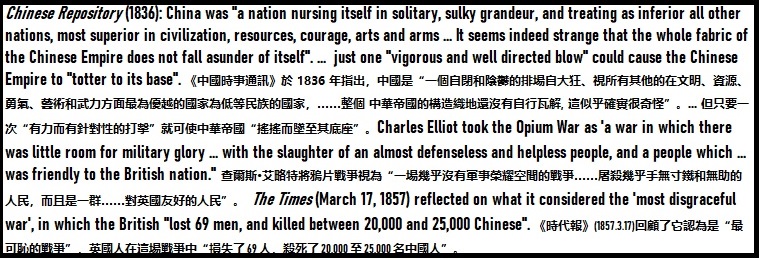
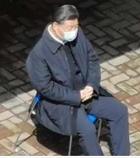








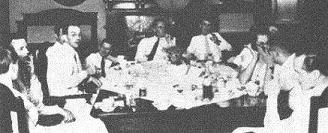
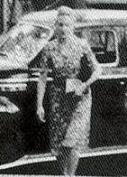
![Though, Anna Wang [Anneliese Martens], in her memoirs, expressed jealousy over Gong Peng by stating that the Anglo-American reporters had flattered the Chinese communists and the communist movement as a result of being entranced with the goldfish-eye'ed personal assistant of Zhou Enlai](GongPeng.jpg)












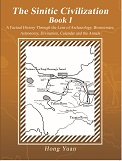
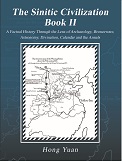


 Qiang-zu, numbering 112000 per 1982 census, possibly the most orthodox descendant of ancient Qiangic people, now dwell mostly around Minjiang River area of Sichuan Prov. A good website about the today's Qiangs would be
Qiang-zu, numbering 112000 per 1982 census, possibly the most orthodox descendant of ancient Qiangic people, now dwell mostly around Minjiang River area of Sichuan Prov. A good website about the today's Qiangs would be 